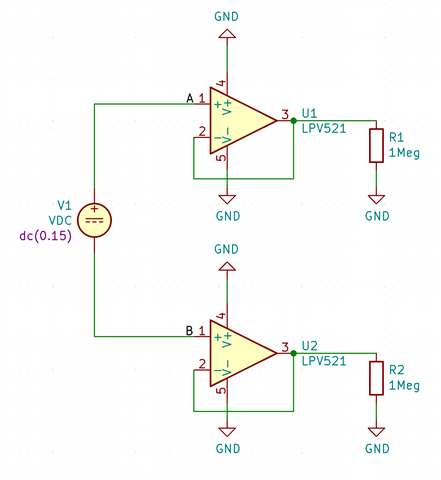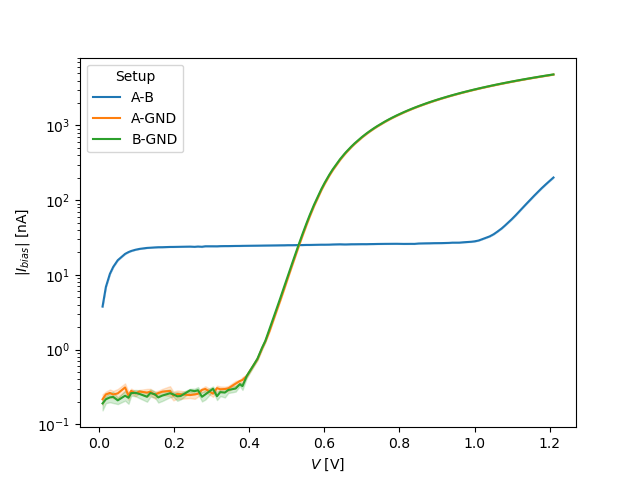Hi,
We are facing a similar issue to the one mentioned in the related question (https://e2e.ti.com/support/amplifiers-group/amplifiers/f/amplifiers-forum/234909/maintain-input-impedance-when-amplified-is-not-powered), but with a twist: our input voltage source (which should see a very high impedance) has only very small voltages (below 200mV).
So far, this is our approximate circuit:

This leads to our first question: How much input leakage can we expect for a unpowered LPV521 with input voltages smaller than 200mV? Theoretically, the ESD diodes should not be forward biased at that point...
The other question is: We see a rather large bias current if the voltage is applied differentially across two LPV521:

We went ahead and measured the input impedance, and got the following input bias current:

A-B is differential, A-GND is the test voltage applied only to the upper OpAmp and B-GND is the test voltage applied only to the lower OpAmp (plus/minus some offset error, since we're operating our ampere-meter on the edge of it's accuracy).
As you can see, the differentially applied voltage results in a much high input bias current. Is this a known phenomenon? Theoretically, we would have guessed that they should look similar (except that we would see a breakdown at twice the ESD forward voltage, which we do), but there is an additional 24nA of bias current which we can not explain...
We used both a shorted and non-shorted opamp supply rail for the measurement, with negligible differences.
Thanks for any insight!
Cheers, Dominik




